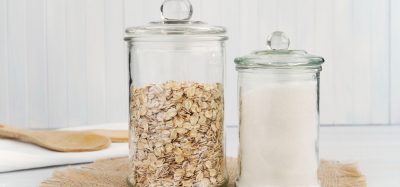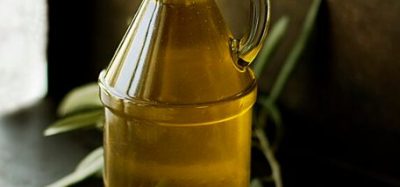Implementation of removing trans fatty acids originating from PVHO
- Like
- Digg
- Del
- Tumblr
- VKontakte
- Buffer
- Love This
- Odnoklassniki
- Meneame
- Blogger
- Amazon
- Yahoo Mail
- Gmail
- AOL
- Newsvine
- HackerNews
- Evernote
- MySpace
- Mail.ru
- Viadeo
- Line
- Comments
- Yummly
- SMS
- Viber
- Telegram
- Subscribe
- Skype
- Facebook Messenger
- Kakao
- LiveJournal
- Yammer
- Edgar
- Fintel
- Mix
- Instapaper
- Copy Link
Posted: 6 November 2012 | Sergey Melnikov, Lead Technologist and Oil Processing and Fat Blends Team Leader and Hans Zevenbergen, Nutrition & Health Europe and Cross-Category Nutrition & Health Director, Unilever | No comments yet
Trans fats (also known as trans fatty acids, or TFA) are formed in the digestive system of ruminants. In the food industry, a similar process called ‘partial hydrogenation’ is used to convert vegetable oils into solid fats for enhanced functionality and shelf life stability. The main sources of TFA in the diet are butter, cheese and meat, as well as bakery products and fried foods1. Scientific research in the 1990s showed that TFA potentially have adverse effects on health linked to an increased risk of heart disease. TFA raise ‘bad’ LDL cholesterol and lower ‘good’ HDL cholesterol. More recently, scientific publications have shown that in terms of their impact on the risk for heart disease, TFA are worse than saturated fats (SAFA) on a gram-for-gram basis2-4.
Unilever is recognised as taking a leading role in the drive to reduce dietary intake levels of TFA. The company was the first manufacturer to produce margarines virtually free of TFA. Unilever has been commended in the scientific and business communities for its actions taken within the industry. By the end of 2011, over 99 per cent of food products in the Unilever portfolio were virtually free of TFA from partially hydrogenated vegetable oils (PHVO). As a part of the Unilever Sustainable Living Plan (USLP), the company made the commitment to have all its products virtually free of TFA from PHVO by 2012. In addition to reducing TFA through product reformulations, Unilever has taken care not to increase saturated fat levels. This is achieved whilst keeping Unilever products affordable and of high quality. Maintaining high quality and affordability is important to ensure that consumers do not turn away from nutritionally improved products, as this would ultimately provide no public health benefit.
Trans fats (also known as trans fatty acids, or TFA) are formed in the digestive system of ruminants. In the food industry, a similar process called ‘partial hydrogenation’ is used to convert vegetable oils into solid fats for enhanced functionality and shelf life stability. The main sources of TFA in the diet are butter, cheese and meat, as well as bakery products and fried foods1. Scientific research in the 1990s showed that TFA potentially have adverse effects on health linked to an increased risk of heart disease. TFA raise ‘bad’ LDL cholesterol and lower ‘good’ HDL cholesterol. More recently, scientific publications have shown that in terms of their impact on the risk for heart disease, TFA are worse than saturated fats (SAFA) on a gram-for-gram basis2-4. Unilever is recognised as taking a leading role in the drive to reduce dietary intake levels of TFA. The company was the first manufacturer to produce margarines virtually free of TFA. Unilever has been commended in the scientific and business communities for its actions taken within the industry. By the end of 2011, over 99 per cent of food products in the Unilever portfolio were virtually free of TFA from partially hydrogenated vegetable oils (PHVO). As a part of the Unilever Sustainable Living Plan (USLP), the company made the commitment to have all its products virtually free of TFA from PHVO by 2012. In addition to reducing TFA through product reformulations, Unilever has taken care not to increase saturated fat levels. This is achieved whilst keeping Unilever products affordable and of high quality. Maintaining high quality and affordability is important to ensure that consumers do not turn away from nutritionally improved products, as this would ultimately provide no public health benefit.
Trans fats (also known as trans fatty acids, or TFA) are formed in the digestive system of ruminants. In the food industry, a similar process called ‘partial hydrogenation’ is used to convert vegetable oils into solid fats for enhanced functionality and shelf life stability. The main sources of TFA in the diet are butter, cheese and meat, as well as bakery products and fried foods1. Scientific research in the 1990s showed that TFA potentially have adverse effects on health linked to an increased risk of heart disease. TFA raise ‘bad’ LDL cholesterol and lower ‘good’ HDL cholesterol. More recently, scientific publications have shown that in terms of their impact on the risk for heart disease, TFA are worse than saturated fats (SAFA) on a gram-for-gram basis2-4.
Unilever is recognised as taking a leading role in the drive to reduce dietary intake levels of TFA. The company was the first manufacturer to produce margarines virtually free of TFA. Unilever has been commended in the scientific and business communities for its actions taken within the industry. By the end of 2011, over 99 per cent of food products in the Unilever portfolio were virtually free of TFA from partially hydrogenated vegetable oils (PHVO). As a part of the Unilever Sustainable Living Plan (USLP), the company made the commitment to have all its products virtually free of TFA from PHVO by 2012. In addition to reducing TFA through product reformulations, Unilever has taken care not to increase saturated fat levels. This is achieved whilst keeping Unilever products affordable and of high quality. Maintaining high quality and affordability is important to ensure that consumers do not turn away from nutritionally improved products, as this would ultimately provide no public health benefit.
The physiological impact of TFA has been a topic of particular attention for health authorities in recent years. WHO urges removal of TFA from food products, so that individual consumers consume no more than one per cent of their dietary energy from TFA5. Hence, WHO recommends focusing on PHVO and considers it as a tool for the virtual elimination of TFA from the human diet. Therefore, PHVO need to be considered in the context of their appli – cations in processed foods. PHVO used as ingredients in foods usually contribute significantly to the TFA content of the food. But TFA present in some minor ingredients (e.g., flavours or emulsifiers), which are widely used in the food industry in formulations at very low levels do not contribute significantly to the TFA content of the final foods. In response to the WHO recommendation to minimise TFA, Unilever’s commitment is that no product will contain more than one per cent trans fat originating from PHVO (one gram per 100 grams finished product), a level which is also being referred to as ‘virtually trans free’.
Unilever’s implementation
In the absence of clear legal and regulatory definitions of PHVO, it is important to define what sets apart a PHVO from a fully hydrogenated vegetable oil (HVO). There have been various attempts to define PHVO in the past; however, most of them were based on measurable parameters that are only indirectly linked to TFA content. Bockisch6 suggested defining PHVO using iodine value (IV) and/or melting point (MP) intervals for these oils. However, nowadays, with the major progress made in reducing TFA levels, IV in our opinion has clear disadvantages, as it is a measure for the degree of unsaturation, which does not discriminate between cis and trans fats. MP values can be of practical use to provide an indication, but cannot accurately predict the amount of TFA in the fat.
Another definition proposed by Deutsche Gesellschaft für Fettwissenschaft (DGF) classifies HVO as fats having a degree of hardening above 90 per cent; consequently, hydrogenated fats containing less than 90 per cent of SAFA and at least 10 per cent of TFA are considered as PHVO6. The DGF approach is helping to focus on the intent to reduce TFA. Evidently, removing PHVO is a tool to reduce TFA, and its definition should be linked to the amount of TFA. In a recent review by L’Abbe et al7 a proposal of the Canadian Trans Fat Task Force was highlighted. This proposal gives TFA limits for foods like margarines which are in line with our Unilever commitment to reduce TFA to less than one gram per 100 gram finished product. In addition, the Canadian proposal states that for vegetable fats and oils used as ingredients in the preparation of foods, a total TFA content of five per cent maximum on fat should be allowed. We have adopted this proposal, which is in line with TFA levels found in commercially available nonhydrogenated oils and fats8-12. Therefore, for achieving our PHVO commitment, we will use as definition: “PHVO ingredients are hydrogenated oils and fats containing more than 5 wt% of TFA.”
In line with the above, for current practical purposes Unilever will only use the following hydrogenated fats, with a melting point range as defined in the table below, as ingredients.
Hence, all other hydrogenated oils will currently be considered as PHVO by Unilever and will no longer be used in our products as ingredients.
Summary
Unilever has been and remains committed to removing TFA from its products. We continue to improve food compositions from our food product portfolio using a clear definition of PHVO and TFA targets to ensure that our products deliver superior nutrition combined with high sensorial quality. We commit to have all our food products virtually free of TFA from PHVO which we have defined as a maximum TFA level from PHVO of one per cent (one gram per 100 grams end product).
References
1. U.S. Department of Agriculture and U.S. Department of Health and Human Services. Dietary Guidelines for Americans, 2010. 7th Edition, Washington, DC: U.S. Government Printing Office, December 2010
2. Mensink R.P., Zock P.L., Kester A.D.M., Katan, M.B. (2003) Effects of dietary fatty acids and carbohydrates on the ratio of serum total to HDL cholesterol and on serum lipids and apolipoproteins: a meta-analysis of 60 controlled trials. Am. J. Clin. Nutr. 77:1146-1155
3. Mozaffarian, D., Katan, M.B., Ascherio A., Stampfer, M.J., Willett, W.C. (2006) Trans Fatty Acids and Cardiovascular Disease. N. Engl. J. Med. 354: 1601-1613
4. Mozaffarian D., Clarke R. (2009) Quantitative effects on cardiovascular risk factors and coronary heart disease risk of replacing partially hydrogenated vegetable oils with other fats and oils. Eur. J. Clin. Nutr. 63:S22-S33
5. Global Strategy on Diet, Physical Activity and Health. Resolution of the World Health Assembly. 57th World Health Assembly. WHA57.17. World Health Organization (WHO): Geneva, 2004
6. Bockisch M. (1997) Fats and Oils Handbook, AOCS Press
7. L’Abbe M.R., Stender S., Skeaff M., Ghafoorunissa, Tavella M. (2009) Approaches to removing trans fats from the food supply in industrialized and developing countries. Eur. J. Clin. Nutr. 63:S50-S67
8. Wolff, R.L. (1993) Further Studies on Artificial Geometrical Isomers of a-Linolenic Acid in Edible Linolenic Acid-Containing Oils. JAOCS (1993) 70:219-224
9. Brühl, L., Fiebig, H.-J. (1995) Qualitätsmerkmale kaltgepresster Speiseöle. Fat Sci. Technol. 97:203-208
10. Brühl L. (1996) Determination of Trans Fatty Acids in Cold Pressed Oils and in Dried Seeds. Fett/Lipid 98:380-383
11. Hénon G., Kemény Zs., Recseg K., Zwobada F., Kovari K. (1999) Deodorization of Vegetable Oils. Part I: Modelling the Geometrical Isomerization of Polyunsaturated Fatty Acids. JAOCS (1999) 76:73-81
12. Tasan M., Demirci, M. (2003) Trans FA in Sunflower Oil at Different Steps of Refining. JAOCS 80: 825-828
About the authors
Dr. Sergey Melnikov is a Lead Technologist and Oil Processing and Fat Blends Team Leader at the Spreads Global Design Centre of Unilever R&D in Vlaardingen, Netherlands. He earned dual doctorates in biophysical chemistry (Nagoya University) and polymer chemistry (Moscow State University), followed by a postdoctoral position at Lund University, Sweden. During his 13 years at Unilever, he held various R&D management position, including creation and leadership of the Food-Body Interactions group. From 2002 to 2007, he led various business category and research capability projects. In 2008, he was responsible for a global multidisciplinary project devoted to the development and implementation of innovative weight management technologies, at the same time acting as a Science Leader in the area of the physical chemistry of food digestion. After that, he joined Spreads and Dressings category of Unilever as a programme manager and a global technical project leader. Dr. Melnikov is a co-author of more than 10 patents and patent applications and over 30 publications in peer-reviewed journals. His key technical interests include food lipid functionality, emulsion technology, design of processed func – tional foods for tailored in-use and in-body functionality, controlled delivery of food actives as well as the functionality of natural ingredients in processed foods.
Hans Zevenbergen is Cross-Category Nutrition Director at Unilever. He is responsible for the nutrition part of the Unilever Sustainable Living Plan, which aims to improve the health and wellbeing of more than a billion people by 2020. After joining Unilever Research in Vlaardingen, The Netherlands in 1981, he worked on various aspects of lipid metabolism and nutrition of oils and fats and obtained his PhD at the Erasmus University in Rotterdam in 1985 on the metabolism of trans fatty acids. From 1994 till 1999, he was Head of Product Development of Unilever’s German food and drinks business in Hamburg. Back at Vlaardingen until 2011, he held various positions as Category Nutrition Director, being responsible for the nutritional aspects of Unilever’s spreads and cooking products and later beverages. His main research topics have been on the health aspects of fats and oils, which resulted in several articles in scientific journals and book chapters, including original research and review papers on trans fatty acids.







